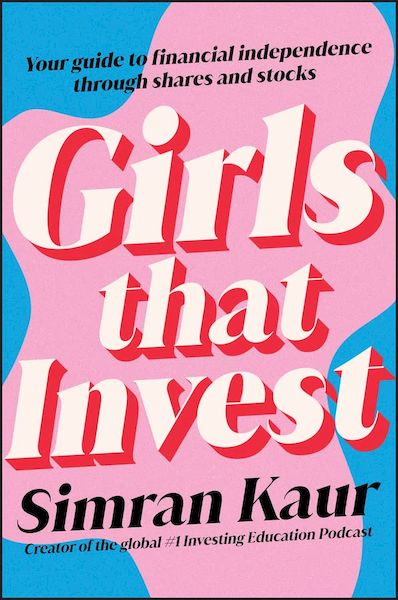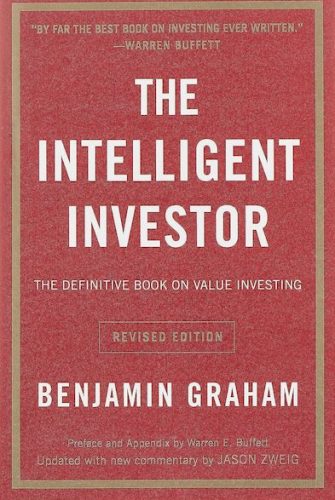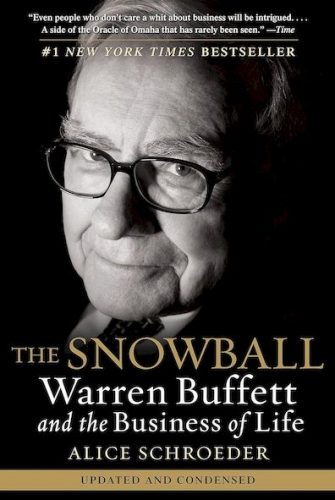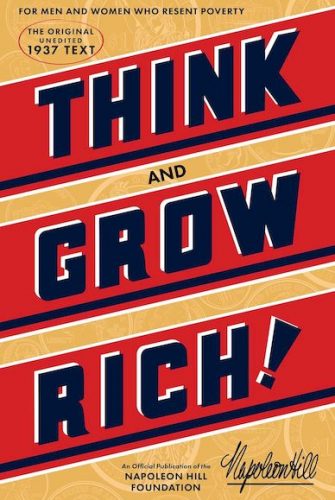Tired of hearing “investing is for men”? It’s time to rewrite the narrative.
Girls That Invest is your powerful roadmap to financial freedom, shattering outdated myths and empowering you to take control of your future.
Author Simran Kaur, financial expert and founder of the “Girls That Invest” movement guides you step-by-step through the world of shares and stocks.
Inside, you’ll discover:
- Why women excel at investing (yes, you read that right!)
- How to overcome limiting beliefs and build confidence
- Actionable strategies to start investing, even with small amounts
- The best investment options for different risk levels and goals
- How to align your investments with your values and make a positive impact
Ready to ditch the fear and join the financially empowered revolution?
Read Summary: ‘Girls That Invest: Your Guide to Financial Independence through Shares and Stocks’ for your key takeaways and start your journey to financial independence today!

- Key Points
- Summary ‘Girls That Invest’
- From outperforming inflation to expediting financial goals, investing caters to females better than saving.
- Vanquish prevalent misjudgments about investing that hinder women.
- Allocate time to boost your rudimentary financial well-being before embarking on investing.
- From equities and bonds to Hermès and digital currency, opt for the finest investment choices to amplify your wealth.
- Instigate beneficial change by patronizing companies that resonate with your principles.
- Attain financial autonomy and retire prematurely by sustaining yourself on your investments.
- Women’s inclination toward strategic, enduring planning equips them with a natural advantage in investment.
- About the Author
Key Points
- Women outperform men in market returns: Due to their strategic, long-term planning and less emotional investing, women tend to see better returns than men.
- Investing is crucial for financial freedom: Investing helps you beat inflation, reach your goals faster, and build financial security.
- Overcome limiting beliefs: Societal portrayals and lack of open discussions about money often discourage women from investing. It’s crucial to challenge these beliefs and build confidence.
- Start with basic financial literacy: Before investing, understand your cash flow, tackle high-interest debt, and build an emergency fund.
- Explore different investment options: Choose from stocks, bonds, mutual funds, ETFs, REITs, and even alternative investments like art and handbags, based on your risk tolerance and goals.
- Invest ethically: Align your investments with your values by considering ESG factors, impact investing, and positive/negative screening.
- Achieve financial independence: The FIRE movement (Financial Independence, Retire Early) provides a framework to build a passive income stream through investing.
- Embrace your strengths: Women’s natural propensity for long-term planning and disciplined investing gives them an edge in the market.
Summary ‘Girls That Invest’
Restrictive money beliefs, structural and institutional impediments, sparse conversations concerning finances, and unfavorable portrayals of women and finances in the media prompt numerous females to inaccurately assume they lack proficiency in investing. Contemplate how mainstream media showcases female characters: Protagonists like Sex and the City’s Carrie Bradshaw and Confessions of a Shopaholic’s Rebecca Bloomwood frequently make unsound financial choices.
According to a Starling Bank analysis in 2018, 70% of financial articles aimed at men focused on investing, while the references to women centered on economizing (e.g., tips for reducing grocery expenses). When the media highlights women as investment virtuosos, it tends to spotlight caucasian women. Ethnic minority women desiring to invest often encounter a lack of representation. Given that finances influence every facet of life, from longevity to resource accessibility and relational health, it’s crucial to surmount restrictive financial beliefs.
“The sole method to evade being ensnared in an unsupportive circumstance is by attaining financial liberty.”
Post-marriage, women frequently relinquish earning potential, concentrating on domestic duties rather than career advancement. This practice can ensnare women in detrimental relations while heightening their financial fragility; for instance, numerous women confront financial devastation post-divorce.
Assume command of your finances and strive for financial autonomy to shield yourself and guarantee perpetual autonomy to live life on your terms. Each woman should stash funds for pivotal life transitions or emergencies. Develop your reserve through investing.
From outperforming inflation to expediting financial goals, investing caters to females better than saving.
There exist five paramount reasons to commence investing:
- Surpass inflation — As per a 2015 BlackRock survey, women park nearly 70% of their wealth in savings accounts, leading to annual inflation-related losses. Investing in the stock market can yield an average annual return of 7–10%, while inflation may cause a 2% annual erosion.
- Harness the compounding interest potential — Given that investing begets returns annually, you can double your capital’s worth every decade with a mere 7% yearly return.
- Attain objectives swiftly — If you stow away $600 monthly without investing, it would necessitate 138 years to accrue $1 million. Conversely, if you invest $600 monthly at an 8% return rate, you would reach millionaire status in only 32 years.
- Revel in financial stability and autonomy — According to Salary Finance research, millennial women report more financial anxiety-induced panic attacks than their male counterparts. By investing and nurturing financial independence, you enhance your complete physical and mental health and well-being.
- Erect a superior world — You can bolster organizations dedicated to forging a positive societal, environmental, and governmental imprint by ethically investing and selecting businesses synchronized with your ethos and values.
Vanquish prevalent misjudgments about investing that hinder women.
Possibly, people cautioned you that investing in the market leads to capital loss, highlighting the perils of investing. In actuality, though a short-term market downturn might lead to financial depletion, history reveals market resurgence consistently post-downturn, and this apprehension obstructs accumulative financial benefits. Investors can elect a risk profile aligning with their comfort level and scrutinize the historical performance and projections of their investments.
“The verity is, perceiving investing as excessively intricate is a widespread fallacy impeding most from commencement.”
You might harbor the belief that investing transcends your comprehension. Nevertheless, investing is fairly straightforward: Envision the stock market akin to an enabler, analogous to eBay, enabling individuals to buy and vend a product — shares. Counter to popular belief, investing necessitates minimal funds to commence. Via “fractional shares,” you can invest in a minuscule portion of a share, with a significantly low entry threshold. Whereas the former investment start could range from $1,000 to $10,000, today, investing as minimal as $10 can grant 1% ownership in Alphabet, the parent company of Google, for instance.
Allocate time to boost your rudimentary financial well-being before embarking on investing.
Pre-investing, acquaint yourself with the rudimentary fundamentals of personal finance. Initially, establish a comprehensive understanding of your cash flow — the money you expend and earn. Initiate tracking your weekly and monthly disbursements to identify areas necessitating enhancement — from utilizing an application to a notebook. Subsequently, tackle any high-interest debts. Contemplate refinancing or consolidating to secure a more manageable interest rate.
“The majority comprehend their earnings as they receive a consistent income, yet few are aware of their expenditures.”
Subsequent debt resolution, establish an emergency fund safeguarding at least three months’ worth of expenses in a savings account. Map out your contributions to a retirement account, ideally maximizing employer incentives. While governmental setups furnish a fundamentally balanced fund, it’s paramount you conduct research and select what suits you best. Lastly, simplify your life by automating finances. For instance, if you desire to invest $50 weekly post-pay, automate payments to an account earmarked for investments, and then remit said funds to your broker biweekly or monthly.
From equities and bonds to Hermès and digital currency, opt for the finest investment choices to amplify your wealth.
Adopt the role of an “investor in training” and acquaint yourself with the following investment genres, Selecting the alternatives that most fittingly match your requirements:
- Equities/shares — Purchasing a small stake in a corporation and becoming a stockholder. If the company performs well, you stand to receive dividends and witness your investment grow. Conversely, if the company underperforms, you may incur losses.
- Debentures — Lending money to a company or government in return for a fixed interest rate. Bonds present lower risk levels compared to stocks but offer a diminished return rate.
- Pooled Funds — Investing in various companies with mixed combinations of stocks, bonds, and other assets, known as a “basket.” Typically, mutual fund managers charge a 1.4% fee for managing your portfolio, as handling these funds involves more active management, though not uniformly.
- Composite Funds — These are assortments of stocks following a specific list; for instance, the NASDAQ representing the top 1000 US technology firms. Composite funds are essentially mutual funds but are managed passively rather than actively. Additionally, composite funds necessitate a higher initial investment amount due to a minimum investment requirement.
- Exchange-Traded Funds (ETFs) — Similar to composite funds, ETFs exhibit a lower entry threshold and experience price fluctuations throughout the trading day.
- Property Investment Trusts — With real estate investment trusts, investors can participate in multiple real estate companies to profit from the real estate market without the obligations of being a landlord.
- Speculative Funds — Comparable to mutual funds but managed by an investment fund manager who undertakes riskier investments in the hopes of outperforming the market.
- Merchandise and Unconventional Investments — Investing in commodities (e.g., precious metals and agricultural products) can serve as a hedge against inflation while diversifying your investment portfolio. Unregulated investments may encompass buying artwork, luxury bags, NFTs, and digital currencies. Interestingly, a Hermès Birkin bag can yield higher returns than the stock market.
Instigate beneficial change by patronizing companies that resonate with your principles.
Aiming to contribute positively, Gen Z and millennials exhibit more interest in ethical investing than prior generations. Analogous to “conscious consumers,” ethical investors consider their societal, religious, moral, and ethical values when evaluating whether a fund or firm aligns adequately with their standards for investment. Some investors take ethical investing a step further by practicing “socially responsible investing” (SRI), ensuring that they exclusively invest in companies that uphold sustainable business practices. Engaging in SRI can be implemented through Environmental, Social, and Governance (ESG) investing, where the focus is on investing solely in companies with a commendable track record regarding ESG issues.
“It is crucial to not only be an ethical investor but also a vigilant one.”
Other conscientious investors partake in “impact investing,” choosing to invest solely in companies they believe contribute positively to society. To make informed investment decisions, consider employing “positive screening” where you select the causes you endorse and invest solely in companies that meet your criteria. For instance, you could screen companies to ensure they are eco-friendly, vegan-friendly, or recognized as “Certified B Corps,” an accreditation reserved for entities adhering to stringent social and environmental performance standards. Similarly, you can utilize “negative screening” to avoid investments in companies involved in practices or products conflicting with your values (e.g., animal testing or arms manufacturing).
Attain financial autonomy and retire prematurely by sustaining yourself on your investments.
Through prudent investment, you can progress toward achieving financial independence referred to as “FIRE” or “financial independence, retire early.” The concept of FIRE was initially introduced by Vicki Robin in her 1992 publication, Your Money or Your Life. Adherents of the FIRE philosophy endeavor to construct investment portfolios that provide the security equivalent to a trust fund. In essence, FIRE advocates for building a portfolio enabling you to subsist on merely 4% of the annual returns (averaging between 7% and 10%) to retire before standard retirement age. Ultimately, financial independence for many individuals equates to freedom of time, which can be facilitated through investments. Strive for FIRE by conserving a substantial portion of your earnings (ideally, 60% to 70%), living frugally, and selecting a broad market index fund as your investment vehicle.
“When individuals express a desire to amass wealth, what they truly seek is the freedom to pursue their desires, often entailing freedom of time.”
The FIRE concept encompasses three tiers: In a “substantial FIRE,” a 4% withdrawal equates to an annual amount exceeding $100,000; In a “minimal FIRE,” the withdrawal ranges between $25,000 and $35,000; Lastly, in a “modest FIRE,” the 4% withdrawal covers only essential expenses such as mortgage payments, with supplemental luxuries sustained through part-time work. Investment returns can be procured through capital appreciation, with stocks appreciating annually and generating compound interest, dividends disbursed by companies as a percentage of profits typically every quarter, or “blended funds” amalgamating both approaches.
Women’s inclination toward strategic, enduring planning equips them with a natural advantage in investment.
According to a 2021 Fidelity analysis, individuals identifying as women yield higher returns (0.4% greater) in comparison to those identifying as men. Goldman Sachs discovered that nearly half of hedge funds managed by women (48%) outperformed the market, while only 38% of male-managed funds achieved similar results.
“Women typically exhibit superior investment performance, yet many remain hesitant to commence investing.”
Incorporate seven approaches that confer you a competitive edge in the realm of investment:
- Embrace Passive Investing — Favoring market participation through a passive index fund, a preference often observed in female investors, rather than selecting individual companies expected to outperform the market, typically leads to superior returns with minimal involvement.
- Leverage Dollar Cost Averaging — Rather than attempting to time the market perfectly, this strategy involves investing fixed amounts at regular intervals, enduring market fluctuations, resulting in a reasonably priced accumulation over time.
- Adhere to a Plan — Avoid succumbing to the Fear of Missing Out (FOMO) investing pattern by sticking to your investment strategy, a trait commonly seen among women investors who are less influenced by peer pressure in their investment decisions.
- Monitor Your Portfolio Sparingly — Studies indicate that frequent portfolio monitoring correlates with reduced stock market earnings. Limit portfolio checks to monthly or quarterly intervals to prevent making hasty decisions amidst market fluctuations.
- Minimize Trading Activity — Women tend to engage in fewer trades during market downturns compared to men, resulting in more favorable long-term outcomes.
- Invest in Comprehension — Men often partake in investments of novel companies or funds they don’t fully grasp. When dealing with risky investments (e.g., emerging cryptocurrencies), women investors tend to adopt a more cautious approach by investing smaller amounts, thereby exposing themselves to lower risks.
- Regulate Emotional Responses — Women demonstrate a lower tendency to panic during market downturns and hastily divest funds. Notably, female investors, when active, often outperform their male counterparts, dispelling prevailing stereotypes concerning women and financial acumen.
About the Author
Simran Kaur founded the podcast Girls That Invest, intending to enhance financial proficiency among women and minority groups. Additionally, she serves as a financial columnist and a respected international TEDx speaker.



